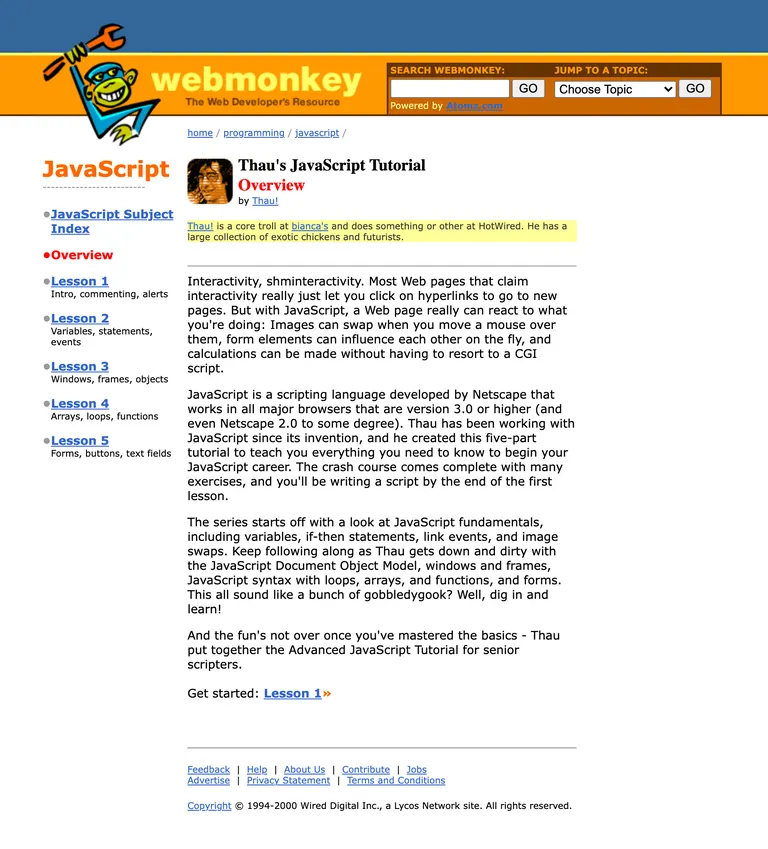About
Hi my name is Simon. I wrote my first program on Basic when I was about 13 years old, it drew circles and lines on the screen of my Intel 486 processor-powered PC. After Basic came Pascal and then C. The school I went to didn't teach programming languages in classes of my age. So I learned to program through the textbooks of my older cousin.
Then came the internet. I was excited to learn that creating websites doesn't take much - some HTML and basic JavaScript logic, and you've got yourself a website with switching images. However, there were no textbooks teaching JavaScript compared to other programming languages. I remember browsing the web with a 56 kbit/s dial-up modem trying to find JavaScript tutorials anywhere I could. Back then, Google wasn't even a thing yet, and you had to use several search engines like Lycos, AltaVista, Excite, and Yahoo to find something. My primary source for JavaScript tutorials was the WebMonkey site. I think the ever first two JavaScript tutorials I read were Thau's JavaScript Tutorial and its second part Thau's Advanced JavaScript Tutorial.
At that time, there were no deployment platforms such as Netlify and Vercel exiting today, letting you seamlessly deploy static sites and use serverless functions to create backend APIs. I used tripod.com's free web hosting services for my first website. To add backend-logic to my website, like a visitor counter and a guestbook, I had to write CGI scripts in Perl. These I also learned on WebMonkey's CGI tutorial.
Fast-forward to current days, after writing code on Java, PHP, Python, Objective-C, building websites, backend services, mobile apps, and writing several patents in these domains, today I am the CTO of Stackbit - a new breed of site builder.
In my journey as a developer, most of which touched web development in one or the other way, I've seen a lot of WYSIWYG-like site-builders. All site-builders I've seen, starting from Microsoft's FrontPage and Macromedia's Dreamweaver, to today's more advanced solutions like Webflow, Squarespace, and Wix, had to focus on one of two main personas - a developer who owns the code, or the content-editor who edits the website's content. If the site-builder chose to focus on a developer or a designer, it had to introduce many technical user interface elements like controlling element hierarchy, styles, margins, sizes, class names, etc., thus creating a highly complex tool to be used by content-editors. On the other hand, if the site-builder focused on the content editor, it had to decide on the underlying technology preventing developers from doing what they want and how they want.
Stackbit redefines the way websites are being built. Stackbit empowers developers to build websites the way they like, using the tools they love and programming patterns they are accustomed to. However, the technology selected by developers does not limit content creators in WYSIWYG editing capabilities.
